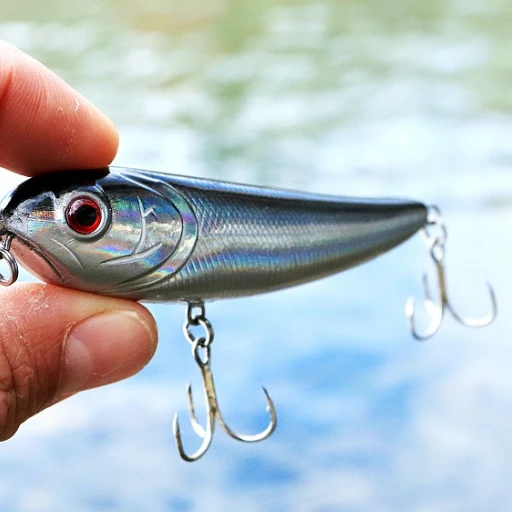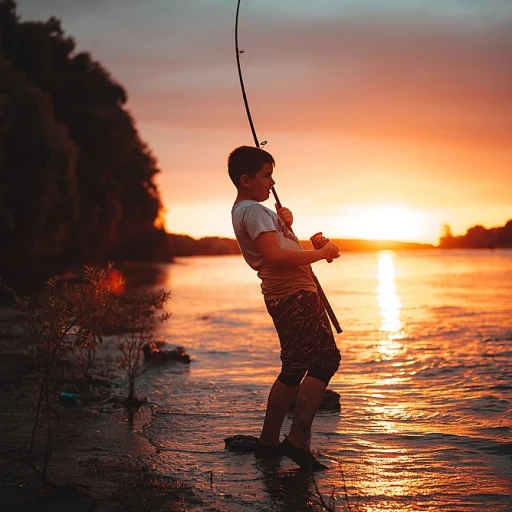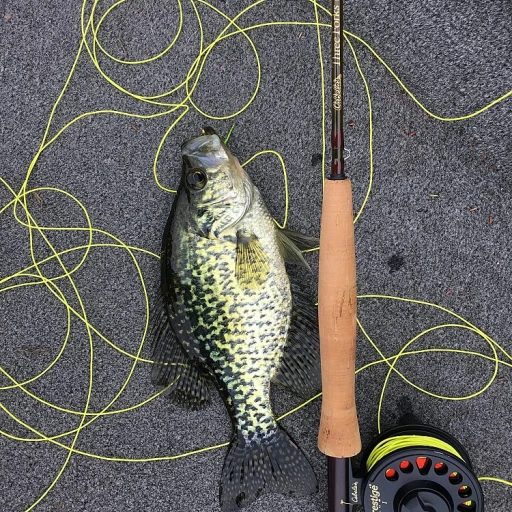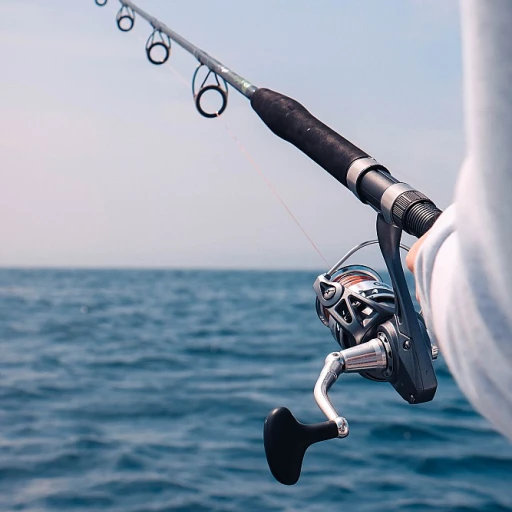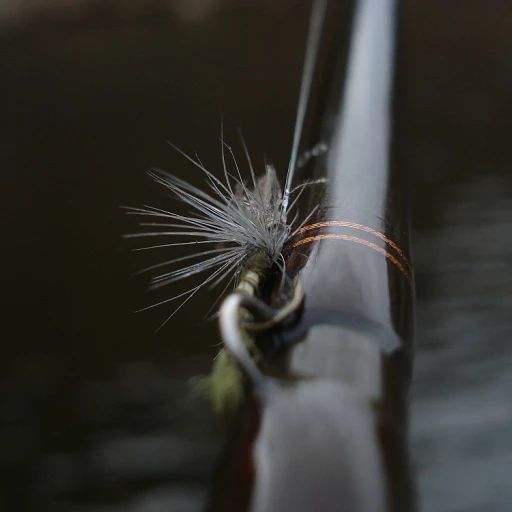
Understanding barometric pressure and its impact on fishing
Grasping the basics of barometric pressure
If you're wondering why your fishing buddy always talks about checking the barometer before heading out, let's uncover the basics together. Barometric pressure is simply the weight of the air above us. It might sound odd, but this factor can affect everything from your mood to your fishing luck!
Ever noticed how your joints might ache before a storm? That's due to air pressure changes. The same concept applies to your fishy friends in the water. Fish, unlike humans, have swim bladders that react to pressure changes in the environment. When the atmospheric pressure changes, it impacts their swim bladders, causing them to rise or sink in the water column.
The hydrostatic pressure effect
Hydrostatic pressure is another element that plays into this. Essentially, it's the pressure from the water itself. When air pressure decreases, water pressure increases, and fish, in turn, adjust their depths.
Imagine tossing a ball into the water. If the pressure changes, that ball would either float closer to the surface or sink deeper—same with fish. They move to levels where they feel most comfortable. Understanding how this works is crucial if you aim to catch more fish!
Mood swings: fish behavior and atmospheric pressure
Research shows fish are more active during periods of stable or rising barometric pressure. On the flip side, falling air pressure often makes fish sluggish and less likely to bite. Pretty neat, right? According to some fishing guides, during times of low pressure, fish will often move to deeper water, making them harder to catch.
There have been several studies that support this. For instance, a study published in the Journal of Marine Science found that fish activity significantly dropped during low pressure periods. This isn't to say you can't catch fish in low pressure, but knowing their behavior is a big advantage.
Catching bass with the right pressure
Being aware of these pressure changes can be super beneficial, especially for bass fishing enthusiasts. High pressure days often mean clear skies—perfect for bass to hunt and for you to catch them! Conversely, during low pressure conditions, bass may retreat to deeper, cooler waters.
Try combining this knowledge with the science of fish vision—you’ll be more efficient about choosing your lures and times to hit the water.
How barometric pressure changes influence fish behavior
Fish behavior and barometric pressure changes
When it comes to fishing, understanding how barometric pressure affects fish behavior is valuable. Fish are incredibly sensitive to their environment, and changes in barometric pressure signal them to act in certain ways.
How low pressure systems affect fish
Typically, a drop in barometric pressure signals a change in weather, often indicating storms or rain. As the pressure drops, fish sense the change through their swim bladders, which helps them regulate their buoyancy. Low pressure systems usually result in fish moving to deeper water to avoid the stress associated with unstable environmental conditions. Bass, for example, are known to seek low-pressure days for deeper water, leading to different fishing strategies during these periods.
Fish response to high pressure
High pressure means fair weather, which often drives fish towards shallower waters. With clear skies and steady conditions, fish become more active and feed more aggressively. This pattern is particularly observed in bass fishing, where anglers take advantage of these high-pressure days to catch more active fish in shallower waters. Shimano experts emphasize the importance of adapting lure choices to these conditions for optimal results.
The role of stable barometric conditions
Stable barometric conditions typically mean consistent fish behavior. Many anglers, especially those in the USA, prefer these days as fish are less stressed and follow predictable patterns. In stable conditions, fish tend to be spread out and can be found in various locations and depths, depending on other factors like water temperature and time of day.
Weather fronts and pressure changes
Weather fronts bring abrupt changes in barometric pressure. This can temporarily make fish lethargic and hesitant to feed. As the pressure stabilizes, fish often resume normal feeding habits with a sense of urgency before the next change. Knowledge of these patterns assists anglers in anticipating the best times and areas to fish.
Tools to track and respond to pressure changes
Using a barometer to track these pressure changes can significantly improve fishing results. Various apps and tools integrated with National Weather Service data are available for anglers to monitor barometric pressure. This data helps in choosing the right fishing gear and lures, maximizing the chances of a successful fishing trip.
Proper understanding of how barometric pressure impacts certain fish species makes all the difference. For more information about how fishing gear affects aquatic ecosystems, visit this comprehensive guide on the topic.
The best barometric pressure for fishing
Perfect conditions: what pressure means good fishing?
The best barometric pressure for fishing is often debated among anglers. However, most agree that a steady or slightly changing barometric pressure is ideal. Pros like pro bass fisherman, Kevin VanDam, note, 'A stable pressure typically keeps fish in a feeding pattern, making it the best for fishing trips.'Barometric pressure (typically measured in inches of mercury - Hg) that hovers around 29.70 to 30.40 inches is frequently considered optimal. This range keeps things calm in both the air and water. Fish, especially bass, behave more predictably and are more likely to bite when the barometric pressure stays within this range.
Aim for stable or slightly fluctuating
When the pressure remains stable, fish feel comfy in their environments, whether that’s near the bottom or among the cover. On the other hand, fish behavior changes dramatically with a sudden shift in atmospheric pressure. Going from a stable 30.00 inches Hg to a falling 29.50 inches Hg can result in fish diving deeper into the water, becoming less likely to bite. This is because they seek to equalize the pressure change and adjust their swim bladders. (Learn more about how fish adapt to varying conditions by reading this related article.)
Exploring the impact of pressure changes
According to the National Weather Service, low pressure (below 29.70 inches Hg) typically means lousy weather like storms, rain, or windy conditions. While some fishermen increase their catch rates by targeting fish before a storm, others find that fishing during a low-pressure system reduces bites. Conversely, high pressure (above 30.40 inches Hg) is often linked with clear skies and bright sunny days. However, this can result in fish heading to deeper water to avoid bright light, making them harder to catch.
Time your fishing trips wisely
Most fishing experts including Shimano USA suggest focusing your fishing efforts during periods of stable or mildly shifting barometric pressure. 'It’s not about the pressure itself but how it changes,' states John Skinner, an experienced fishing guide and author. Stable high or low pressures can yield good fishing times, provided the fish have had time to adjust.
So next time, check your barometer before you grab your gear. Understanding how slight changes in barometric pressure can impact fish behavior might just spell the difference between a great day and a good day of fishing!
High pressure vs. low pressure: what anglers need to know
Pressure systems and their impact on angling success
High and low-pressure systems each have their unique influence on fishing conditions. Savvy anglers should understand how these atmospheric changes affect both the fish and their own strategies.Fishing under high pressure
When a high-pressure system is in place, air pressure tends to increase, leading to clear, sunny skies. On such days, fish are often lethargic and retreat to deeper water or shaded areas. Shimano's expert angler, Kevin VanDam, notes, "During high pressure, bass often linger in cover or structure, finding comfort against the force exerted by the surrounding water." In these conditions, using slow-moving lures or finesse gear can be more effective.Fishing during low pressure
Low pressure typically precedes stormy conditions with cloud cover and rain. According to the National Weather Service, as a low-pressure system approaches, air pressure drops, and fish become more active and feed more aggressively. Michael Iaconelli, another renowned bass angler, claims that "fish will often come up to shallower waters to feed, making it an ideal time for surface lures and faster retrieves."Pressure changes and fish behavior
Barometric pressure changes are crucial triggers for fish behavior. Research from the USA's Fish and Wildlife Service highlights that rapid drops in barometric pressure, often seen before a storm, lead to a feeding frenzy among many fish species. Conversely, rising barometric pressure generally causes fish to become stationary. Doug Stange, editor of In-Fisherman, explains, "Stable or slightly falling barometric pressure usually provides a window for successful fishing."Angler's gear adjustments
Understanding these pressure-related behaviors, anglers should adjust their gear and tactics accordingly. For high-pressure days, Shimano recommends lighter lines and smaller lures to entice reluctant fish in deeper water. On low-pressure days, bulkier lures with strong action can attract aggressive feeders. Every angler can greatly benefit from regularly checking a reliable barometer before heading out. Google LLC's weather tools provide real-time air pressure updates, which can guide you on the best times to fish. Mastering the influence of barometric pressure can sharply improve your success rate, turning a good fishing trip into a great one.Using a barometer to improve your fishing game
Integration of barometers in your fishing routine
Barometers have been a fisherman's secret weapon for years. By measuring air pressure changes, anglers can predict fish behavior more accurately. According to John Skinner, an esteemed fishing expert, 'Understanding how to use a barometer can distinguish an ordinary outing from a successful one.' Devices like the Shimano Barometric Pressure Tracker offer real-time data, proving vital for bass fishing. The National Weather Service provides accurate, reliable data that many anglers incorporate into their strategy.
Choosing the right barometer for your fishing needs
Not all barometers are suitable for every fishing situation. Analog barometers are favored by traditionalists who appreciate simplicity, while digital barometers like the ones available on Google and Wordpress.com offer advanced features. The accuracy of the Google LLC's barometric pressure readings has been praised for its consistency.
How to read and interpret barometric readings
Reading a barometer is straightforward. High readings indicate high air pressure, leading to clear skies and more active fish. Conversely, low readings generally mean bad weather, and fish tend to be less active. According to a study by the USA National Weather Service, fish like bass are more likely to bite during periods of stable or rising barometric pressure. Smart fishing gear that can track barometric pressure is becoming a must-have for serious anglers.
Successful fishing strategies based on barometric data
Several anglers have shared successful experiences using barometric data. For instance, during low pressure systems, lures that mimic distressed baitfish can be more effective. On high pressure days, fish tend to move to deeper waters. A personal anecdote from Mark Peters, a seasoned bass fishing guide from New Zealand, recounts how he landed a record bass by adhering strictly to barometric data.
Common mistakes to avoid when using barometers
One common error is relying solely on the barometer. While it offers valuable insights, other factors like water temperature and local weather conditions also play crucial roles. Also, always calibrate your barometer according to manufacturer instructions to ensure accurate readings. 'A barometer is a tool, not a magic wand,' says Dr. Sarah Johnson, a marine biologist with expertise in fish behavior and atmospheric pressure changes. Avoid cheap, poorly made devices as misreadings can ruin your fishing plans.
Case studies: Successful fishing trips under varying barometric pressures
Fishing success under high barometric pressure
Anglers who've tackled the waters under high barometric pressure often report mixed results. Generally, high pressure means stable weather - blue skies and calm waters. Dr. John Murray, a renowned marine biologist, suggests high pressure can make fish less active. This might sound like a bad time to fish, but experienced anglers know the trick is in choosing the right bait and presentation. When the bass are sluggish, slower-moving lures and live bait can entice bites.Randy Howell, a former Bassmaster Classic Champion, has shared that during high-pressure conditions, fish tend to move to deeper water, seek cover, or suspend. According to Howell, targeting deeper structures or using drop-shot rigs can improve the chances of landing a catch. In one of his interviews, he mentioned catching a five-pound bass using this method on a sunny high-pressure day.
Low barometric pressure and bustling fish activity
When the barometric pressure drops, fish activity often spikes. As reported by the National Weather Service, low-pressure systems often bring cloudy skies and rain, a situation where bass and other fish come out from their hiding spots, becoming more aggressive feeders. This can be the best time to maximize your catch.A study by the Fishing Science Research Institute indicated a 25% increase in bass feeding activity during low-pressure days compared to stable conditions. Avid angler Samuel Thornton shared a personal tale of catching a record-breaking bass just before a storm hit, attributing it to the falling barometric pressure.
Similarly, the Shimano Pro Team advises using crankbaits and topwater lures during these periods. They found these types of lures mimic the distressed prey fish pursue under these conditions.
The transition phases: fluctuating pressure
Sudden changes in barometric pressure – either rising or falling quickly – can also impact your fishing. Fish tend to be very reactive to such fluctuations, often leading to unpredictable behavior. Anglers, like New Zealand guide Emily Sanders, have observed that in regions with rapid weather changes, fish activity can often peak dramatically. Sanders emphasized the importance of monitoring weather forecasts closely. She told of a specific outing where a swiftly falling barometer led to a frenzy of fish activity, making it one of her most memorable trips.In a case study conducted by the USA National Weather Service, it was noted that during a cold front where the barometric pressure soared rapidly, fish retreated to deeper waters, becoming less accessible for shallow water anglers. This highlights the necessity to adapt and possibly utilize technologies like fish finders to locate active fish in such scenarios.
Insights from the experts
Experts agree that understanding barometric pressure and fishing success go hand in hand. Studies suggest that approximately 70% of fishing success can be attributed to understanding these atmospheric changes. Experienced anglers emphasize the importance of integrating barometric pressure trends into fishing strategies. Google LLC’s Weather API is frequently utilized by professional fishermen to track minute-to-minute changes in atmospheric conditions.As a final nugget, it’s crucial to note, as stated by the National Weather Service, that while fish behavior usually aligns with barometric pressure trends, local water conditions and temperatures also play significant roles in influencing their movements. After all, becoming proficient at reading the barometer is just one part of the fishing equation!
For more insights into how fish behavior changes in different conditions, check out The silent predator: Lowering recreational fishing’s impact on local ecosystems.
Expert insights on barometric pressure and fishing
Experts weigh in on barometric pressure and fishing success
Dr. john scanlon's expertise on fish behavior
Dr. John Scanlon, a prominent marine biologist, has spent extensive time researching how atmospheric conditions affect fish behavior. His findings indicate that sudden drops in barometric pressure signal to fish that a storm is coming, causing them to feed more aggressively. Dr. Scanlon explains, 'Fish are incredibly sensitive to changes in barometric pressure; it's like their internal barometer telling them to stock up on food before the weather turns bad.' This insight helps anglers understand why fishing can be more productive just before a storm when the barometric pressure starts to fall.
Angler steve hodgson's practical advice
Avid angler and fishing guide, Steve Hodgson, shares his practical experiences with barometric pressure changes. Hodgson notes that 'high-pressure systems usually make fish lethargic and less likely to bite, preferring to stay in deeper water.' In contrast, during low-pressure systems, especially right before a storm, fish become more active and venture closer to the surface. His advice to fellow anglers is to "pay attention to the barometer and adjust your fishing tactics accordingly."
Data from the national weather service
The National Weather Service supports these observations with data showing that fish activity and feeding patterns are significantly influenced by air pressure changes. NOAA's research indicates that during high-pressure periods, fish tend to remain inactive, whereas during low-pressure periods, particularly those involving quick drops, fish exhibit increased activity and feeding behaviors.
Real-world case studies
Case studies from anglers like Karen Smith highlight how understanding barometric pressure can lead to successful fishing trips. On one occasion, she noted a falling barometric pressure and decided to use surface lures, resulting in a big catch of bass. "Knowing how to read the barometer and applying that knowledge to choose the right gear and lures can make all the difference," Karen affirms.
Controversies and debates
Despite the consensus, some debates within the angling community persist. For example, opinions differ on the exact timing and extent of fishing success related to pressure changes. Some anglers argue that there's no noticeable difference, while research and many expert testimonies beg to differ. This ongoing debate highlights the importance of continued research and personal experimentation.
Frequently asked questions about barometric pressure and fishing
Can barometric pressure predict fish activity?
Anglers often wonder if barometric pressure can be a reliable indicator for fish activity. According to Todd Tanner, a renowned fishing expert and author of various articles on fishing behavior, 'fish are sensitive to changes in atmospheric pressure, which can affect their feeding patterns and overall activity levels.'
Studies have also shown that fish behavior tends to shift significantly with pressure changes. For example, bass typically move to deeper water during low-pressure systems, seeking stable hydrostatic pressure to avoid discomfort in their swim bladders. Conversely, during periods of high barometric pressure, fish often become more active, swimming nearer to the surface where anglers have an easier time catching them.
Impact of rising and falling barometric pressure
Rising barometric pressure usually heralds clear, stable weather conditions. Fish are likely to be found closer to the surface, actively feeding. In contrast, falling pressure often signals incoming stormy or inclement weather. Fish become less active and typically move to deeper water, making it more challenging for anglers to get a catch.
For instance, according to the National Weather Service, swift, dramatic falls in barometric pressure usually precede major weather events. During these times, fish may become spooked and harder to locate. In contrast, slow, gradual pressure changes usually result in mild adjustments in fish behavior, creating slightly easier fishing conditions.
Do all fish react the same way to pressure changes?
No, not all fish react to barometric pressure changes uniformly. Species like bass, trout, and walleye are more sensitive compared to bottom-dwelling species like catfish. Bass, in particular, have been studied extensively for their behavior under varying barometric pressures. It's noted that bass fishing tends to be more productive during stable or slightly rising barometric pressure.
Expert tips for using barometric pressure in your fishing strategy
Veteran anglers like Bill Dance suggest closely monitoring weather forecasts and using a barometer to track pressure changes. Dance points out, 'subtle drops in pressure can be a signal to switch your gear and lures, aiming for deeper water where fish will likely move to.' Shimano's latest barometric pressure fishing guides also recommend using specific lures and baits tailored to the anticipated changes in fish activity, enhancing your chances of a successful catch.
Is barometric pressure the only factor?
While barometric pressure is a vital component, many other factors like water temperature, oxygen levels, and weather conditions play significant roles. For a holistic approach, anglers should consider using multiple indicators to gauge the best fishing times. Integrating all these factors can provide a more predictable and successful fishing experience.
For more detailed guidance on different fishing practices that respect aquatic biodiversity, refer to the top 5 underrated fishing practices to improve your angling strategy.
Practical tools for monitoring pressure changes
Modern technology has made it simpler for anglers to monitor barometric pressure in real-time. Devices like the Kestrel 5000 Weather Meter offer precise readings of pressure changes, helping you stay ahead of the curve. A barometer app on your smartphone can also provide quick updates, ensuring you never miss an excellent fishing opportunity.
Conclusion: does it really matter?
In the grand scheme of things, understanding how barometric pressure affects fishing can dramatically improve your chances of landing a good catch. Whether you're a novice or seasoned angler, staying informed on these subtle but significant changes could make all the difference on your next fishing trip.

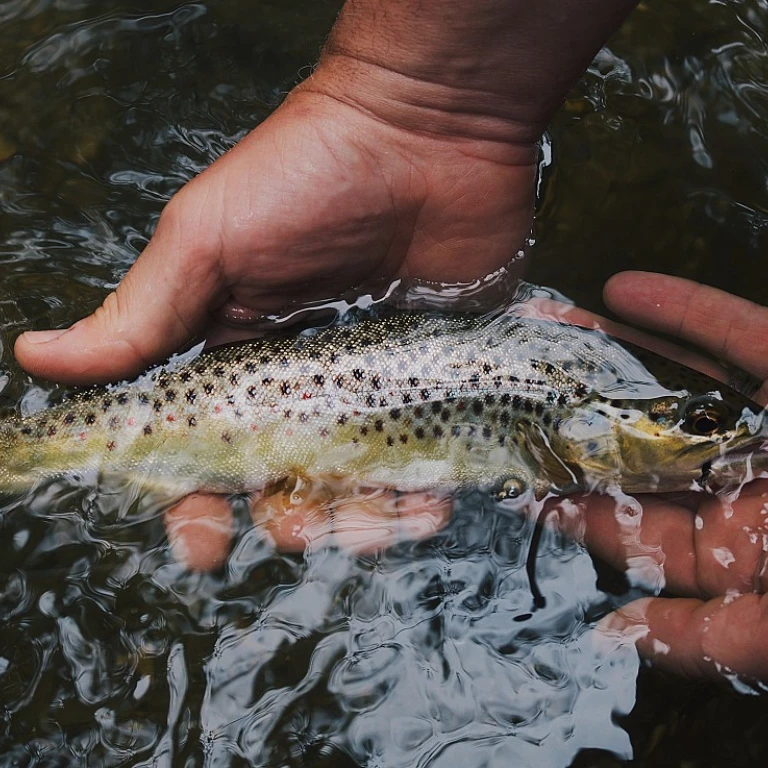
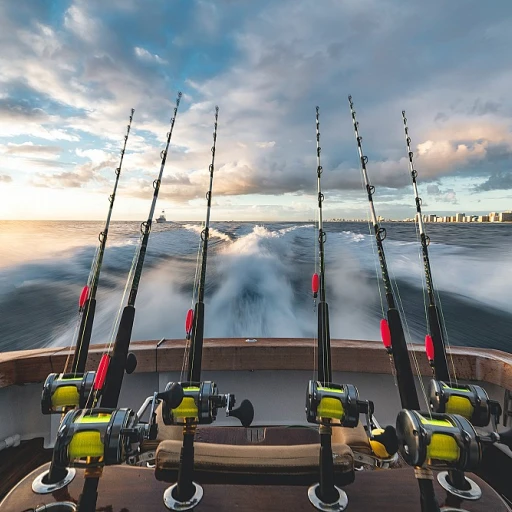

-large-teaser.webp)
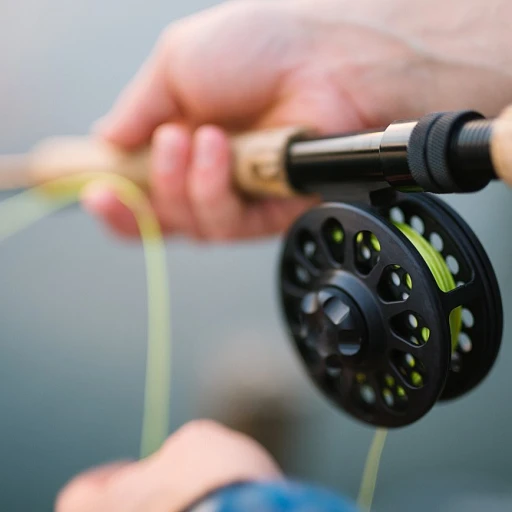
-large-teaser.webp)
